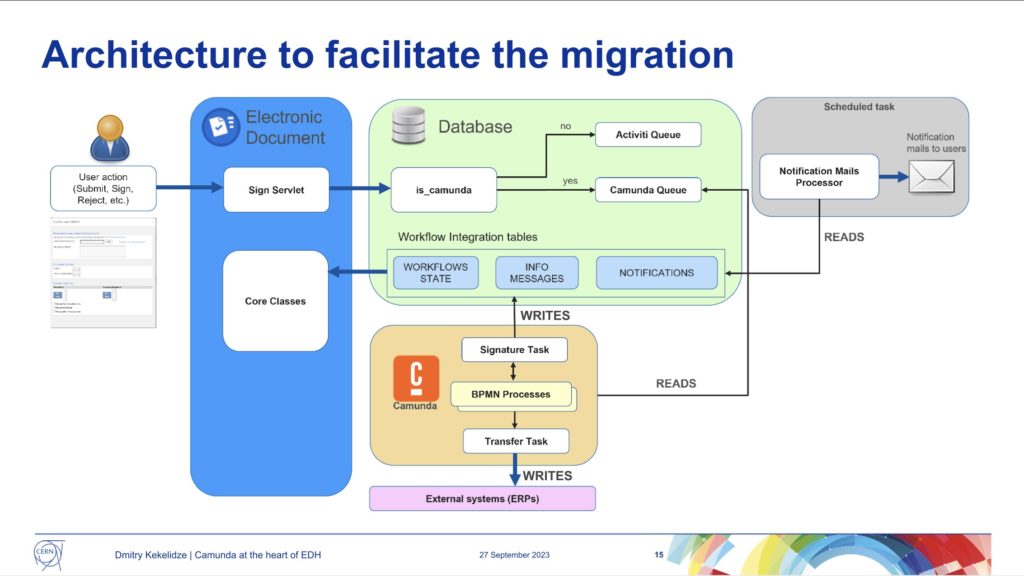As we reached the end of the first day of CamundaCon 2023 in NYC, Dimitri Kekelidze of Conseil Européen pour la Recherche Nucléaire (CERN, or what we in English would call the European Council for Nuclear Research) presented on their use of Camunda for handling electronic documents. Although an “administrative” sort of workflow, it’s pretty critical: they started in the early 1990s to move from paper to electronic forms and documents, and those are used for everything from access requests to specific buildings to all types of HR forms to training requests to purchasing.
The volume is pretty significant: there have been 2 million leave requests alone since the system was started in 1992, and this is not just about filling out a form online, it’s the entire process of handling the request that is kicked off by the form. In short, document-driven processes where the document is an electronic form filled out on their employee portal.

CERN started their electronic document handling in 1992 (long before Camunda) with a home-built workflow solution, then moved to Oracle workflow in 1998, then to ActiveVOS (a name I haven’t heard in years!) in 2006, Activiti in 2013, and Camunda in 2021. Making the move from Activiti to Camunda meant that they could migrate quite a bit of the BPMN and code, although there were specific functions that he discussed that required a bit of work for migration. Since then, they’ve migrated 65 processes, and have 9 still to migrate; this has necessitated an architecture that supports both Activiti and Camunda, depending on the type of workflow.

Because of the business criticality, volume and complexity of these processes, there is a significant amount of testing prior to migration. They had a number of bugs/glitches during the migration: some because they had some legacy code that was no longer required (such as marking workflow instances busy/free in an external database), and some due to overly complex BPMN diagrams that could be redrawn in a simpler fashion to remove manual escalations and error handling.
In the upcoming months, they plan to complete the migrate of the remaining 9 processes so that they can decommission Activiti. They will also be upgrading to Camunda 8, and adding some custom plugins to Cockpit for monitoring and managing the flows.

